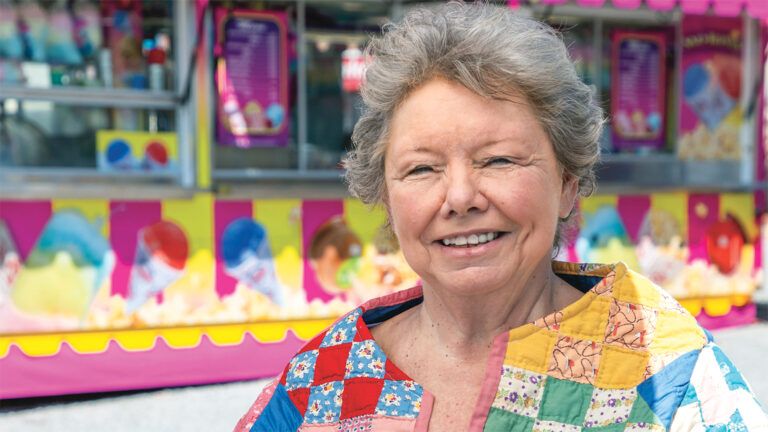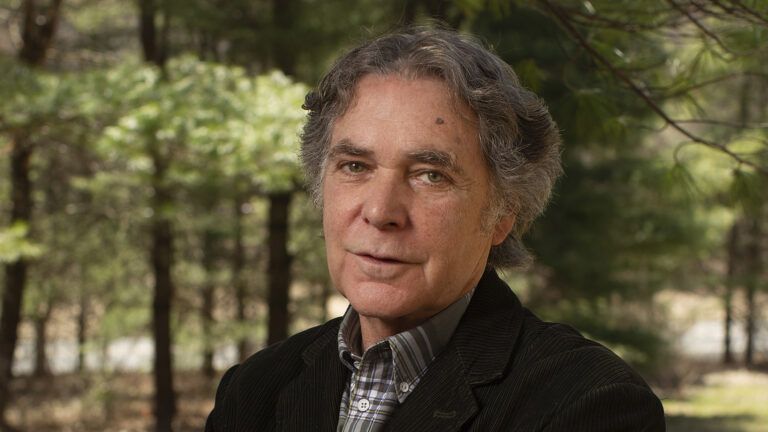The snowy trail beneath my skis was stunning.
An undulating, 20-kilometer course through the Swedish countryside–meadows, valleys and forests. The kind of trail you’d love to ski for fun.
But that March day in 2002, a leisurely trek was the last thing on my mind. I’m an Olympic cross-country skier, and I was racing for all I was worth.
For most of the last century, Europeans have dominated international cross-country skiing. Americans have been Johnny-come-latelies. My goal, my dream, was to change that. I’d been blessed with the gift of a skier’s body and I wanted to make the most of it.
I was in good position, running about sixteenth. I crested a hill, ready to make my charge toward the leaders. Suddenly I felt woozy. My legs went weak. No, not now!
I tried to shift into overdrive, summon that extra burst of energy elite athletes draw on. But I couldn’t, not this time. I’m bonking. Bonking means you’ve hit a wall.
It happens when you’ve used up all the blood sugar stored in your body. You get lightheaded and start to sweat, till you’re so sapped you can barely move. Every racer has to deal with it. That’s why, every 10 kilometers or so, aides stand at the side of the trail waiting to hand you an energy drink.
I needed those drinks more than anybody. I was the only racer with diabetes, and that made me more prone to bonking. I headed toward the edge of the trail, where my doctor stood, holding a sugary drink. I reached for it as I skied past–and dropped it. No! I watched the drink dissolve into the snow.
Ahead of me was another steep climb. Halfway up I began to wobble. Skiers passed me left and right. I have to get a drink.
Desperate, nearly delirious, I made for the first person I saw holding a cup. A Russian coach. “Give me that!” I shouted, reaching for the energy drink.
The coach jerked it away. “That’s for my athlete,” he said.
I snatched the drink. “I need it more than he does,” I said apologetically, and gulped it down. By the time I returned to the trail, I’d fallen to about fiftieth. So much for a top-three finish.
That night, I lay in bed and wondered, Was my career over? Almost before it had a chance to begin?
My mind drifted back to August 2000, at the U.S. Ski Team’s Park City, Utah, training center. The coach called me over as I was about to head for my morning workout. “You have to go for a blood test,” he said.
“Why?” I asked. I felt fine, better than fine. World-class skiers are some of the most finely tuned athletes.
“Everyone has to,” he said. “No way around it, Kris.”
I sauntered over to the medical center, where the team doctor filled a few test tubes with my blood. No big deal. I went back to training and forgot about it. A couple days later the coach told me the doctor called.
“She said there was an irregularity in your blood work and they need to do a follow-up. She wants you to see an endocrinologist tomorrow in Salt Lake City. It’s probably nothing.”
Two hours to drive there and back, another hour for the appointment. That was three hours of training time down the drain. Man, I was steamed. I walked into the endocrinologist’s office, thinking, What a waste of time.
The doctor pricked the tip of my middle finger with a glucose monitor. He glanced at the reading. “Yep,” he said, “you’ve got type 1 diabetes.” The doctor might as well have stabbed me in the heart. I asked the only question that mattered: “Will I still be able to ski?”
“Not at the level you’re aspiring to,” he said. “No diabetic has succeeded at the Olympics in an endurance sport.” The doctor kept talking, but my brain shut off. Winning an Olympic medal for my country… I’ve dreamed of that all my life. No disease can take that way.
I drove back to Park City in shock. “How did it go?” the coach asked. I mumbled something and hustled past him.
Why was this happening to me? There was no history of diabetes in my family. The doctor said even though my pancreas was still producing some insulin, I was sick. It was hard to believe. I felt fine.
I headed to the track for my afternoon workout, but kept apart from my teammates. I didn’t want them to see me cry.
My first instinct was to fight. I know my body better than any doctor. I started reading about diabetes. What I learned was this: If ever there was a time when a person could manage his diabetes, it was now.
Fast-acting insulin had just come on the market. Glucose monitors were far more high tech. There were major advances in exercise and diet science.
I scoured the internet for an endurance athlete with diabetes, someone I could look to for inspiration.
Olympic swimmer Gary Hall, Jr., who won the gold in the 50-meter freestyle in both the 2000 and 2004 Games, has diabetes. But swimming 50 meters takes about 20 seconds–hardly an endurance event.
I decided right then: I’m going to be the first diabetic to succeed at the highest level in an endurance event.
But then my pancreas shut down completely. I was put on insulin and began injecting my abdomen up to 12 times a day to control my glucose levels. The ski team coach said he couldn’t help me, given my condition.
I searched for a new coach and a new doctor, people willing to help me find the best way to compete, who could help me achieve my dream of being an Olympic athlete.
Learning to balance blood sugar with insulin is difficult for anyone, but for me it was even more of a challenge because of the massive demands I placed on my body.
I tumbled into depression. Here I was, 20 years old, with a body that was no longer fully functional. I was still training and my national ranking remained high, but the added mental and physical stress of diabetes exhausted me.
I went to a diabetes support group looking for help. All I found was a lot of people offering sympathy. I didn’t need sympathy. I needed answers, on how to eat, how to train for maximum performance.
Frustration was eating me up. One day a coach tried to give me pointers on racing techniques. I blew up at him. Even as I yelled at him, I thought, What am I doing? He’s only trying to help.
Then came that devastating fiftieth place finish in Sweden. And the dawning of my worst fear: that I’d never be an Olympic champion.
I knew I couldn’t go on like this. I’m not one of those athletes who resort to prayer, but one night as I lay in bed I begged for guidance. I awoke the next morning with a new resolve. Diabetes is not going to stop me.
I’d been given not just the gift of a skier’s body but also the heart and soul of a champion. Everything I needed for my dream.
I went to see a psychologist. He seemed to get me, who I was and who I wanted to be. After one of our sessions, I put on my skis and hit the trail, not so much to train, but to think about things.
The woods were silent and beautiful. Gliding through them put me at peace. I thought about what the psychologist had told me: Don’t give in to negativity. Trust in yourself, and your gifts, and you’ll find a way.
I started working with a new doctor. Together, through a lot of trial and error, we found a regimen that was effective for me. He fitted me with an insulin pump that attaches to my triceps or lower back with a special adhesive that can withstand the sweat of competition.
We devised a high-calorie, low-carbohydrate training diet of fruits, vegetables and lean protein. And I found a new coach, one who believed in me and helped me become the best I can be.
On January 22, 2014, I was nominated by the U.S. Ski and Snowboard Association to participate in the Sochi Games; it will be my fourth time to compete in the Winter Olympics. They say that cross-country skiers reach their peak around age 30. I'm 33. I can’t tell you how or why, but I can feel it–this could be my time.
More stories from Winter Olympians!
Download your FREE ebook, Rediscover the Power of Positive Thinking, with Norman Vincent Peale





